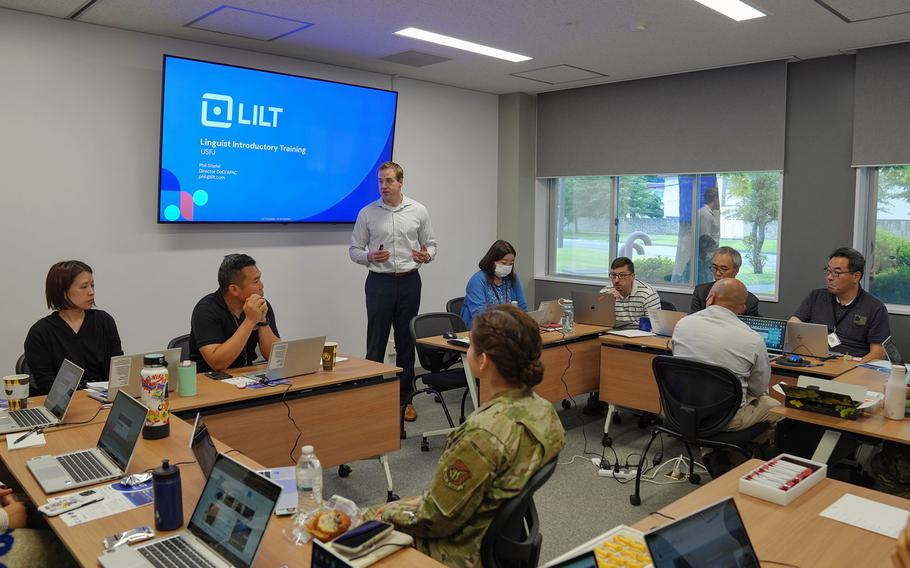Asia-Pacific
Air Force turns to AI to translate ‘DOD geek speak’ into Japanese
Stars and Stripes July 17, 2024

Personnel with the 374th Contracting Squadron gather for linguist training at Yokota Air Base, Japan, June 11, 2024. Technology presented in the course aims to create an easier path for translating domain-specific languages by utilizing artificial intelligence and machine learning. (Irene York/U.S. Air Force)
YOKOTA AIR BASE, Japan — When the contracting squadron at this airlift hub in western Tokyo needed help translating “DOD geek speak” into Japanese, it turned to artificial intelligence, or AI.
Members of YokoWERX, an innovation lab at Yokota that helps airmen solve technical problems, referred the 374th Contracting Squadron to Lilt, an Emeryville, Calif.-based company whose founders worked at Google Translate before starting their own firm.
“They were able to create a machine learning model specifically for our organization, so all of the DoD geekspeak we have could be incorporated into our own AI application for translation,” squadron commander Lt. Col. Mark Wagner told Stars and Stripes in an interview July 2.
Translation is just one aspect of AI that interests the Defense Department, which established the Chief Digital and Artificial Intelligence Office on June 1, 2022.
The Pentagon is requesting $1.8 billion to support the delivery and adoption of AI-enabled capabilities, workforce development and data management efforts for fiscal 2025, according to a Defense Scoop article from March 11.
Lilt specializes in AI-based translation applications using large language models, a form of AI that uncovers patterns across large amounts of text and applies it to generate responses.
The Defense Department awarded Lilt a $5.8 million contract that expires in March 2028, according to usaspending.gov. The company started work in December with units in Japan and South Korea in several fields, including medical, intelligence and contracting, according to usaspending.gov and Phil Stiefel, Lilt’s director for DOD and Asia-Pacific.
“We officially got on contract to work in December of 2023,” he told Stars and Stripes by phone Tuesday.
Stiefel visited Yokota in January 2023 for a site survey and to meet some squadron leaders and learn about challenges that Lilt’s AI translation model could help them overcome.
“We’ve been looking to do something for a long time,” Stiefel said in the interview. “It just took a while to find a funding source and to get on a contract.”
Last month, Stiefel returned to Yokota as part of a series of visits to U.S. military bases in Japan and South Korea to teach the contracting squadron how to train its AI model to accurately translate documents and contracts.
The service is web-based and provided by Lilt, but DOD will have exclusive control of it once it’s fully established, Wagner said
To convert a document, Yokota’s contracting squadron uploads it to the translation site and selects the language it needs to be converted to, Wagner said.
After a few minutes, the site provides a translated version of the document, which is sent to a human translator to correct any errors the AI made, he said. During the review, translators can add words and acronyms to the AI’s vocabulary.
The software then receives the corrected document and learns the corrections and added vocabulary, so it doesn’t make the same mistakes on future translations, Wagner said.
The contracting squadron plans to officially launch the AI model after it’s had more time to train it, he said.
“My intent for this is to broaden who we do business with and increase competition, which will hopefully lower costs,” he said.
Wagner foresees wider applications as the Air Force works with other U.S. allies in the Indo-Pacific.
“The second goal of this technology is to use that in an Agile Combat Employment environment,” he said. “If we have to go out and operate in another location like the Philippines or anywhere else in the region, we can use this technology to generate documents in the native language and from the native language back to ours very quickly.”